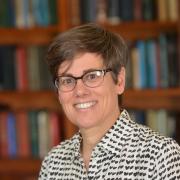The Young Child and Mathematics, Third Edition

About the Book
- Illustrates through detailed vignettes how math concepts can be explored in planned learning experiences as well as informal spaces
- Highlights in-the-moment instructional decision-making and child–teacher interactions that meaningfully and dynamically support children in making math connections
- Provides an overview of what children know about counting and operations, spatial relations, measurement and data, and patterns and algebra
- Offers examples of informal documentation and assessment approaches that are embedded within classroom practice

Table of Contents
-
Preface
- About this Edition
- Our Theory of Learning
-
Introduction
- Everything a Child Does Has Mathematical Value
- Finding and Building on the Mathematical Value
- An Overview of this Book
- Engaging with this Book
-
Chapter 1: Counting and Operations
- Instructional Activity: Counting Collections
- Exploring Children’s Thinking: Counting
- Exploring Children’s Thinking: Operations
- Assessing Children’s Understanding
- Counting and Operations in Informal Spaces
- Conclusion
-
Chapter 2: Spatial Relations
- Instructional Activity: Describe-Draw-Describe
- Exploring Children’s Thinking: Describing Spatial Relations
- Exploring Children’s Thinking: Representing Spatial Relations
- Assessing Children’s Understanding
- Spatial Relations in Informal Spaces
- Conclusion
-
Chapter 3: Measurement and Data
- Measurement and Data in Informal Spaces
- Instructional Activity: What Do You Notice?
- Exploring Children’s Thinking: Measurement
- Exploring Children’s Thinking: Data
- Assessing Children’s Understanding
- Conclusion
-
Chapter 4: Patterns and Algebra
- Exploring Children’s Thinking: Creating and Extending Patterns
- Assessing Children’s Understanding: Tea Party Patterns
- Exploring Children’s Thinking: Patterns in Counting
- Assessing Children’s Understanding: How High Can Christopher Count?
- Exploring Children’s Thinking: Patterns and Algebra in Storybooks
- Assessing Children’s Understanding: Storybook Patterns
- Conclusion
-
Appendix A: A Research Overview of What Young Children Know
- What Young Children Know: Counting and Operations
- What Young Children Know: Spatial Relations
- What Young Children Know: Measurement and Data
- What Young Children Know: Patterns and Algebra
- Situating What a Child Knows
-
Appendix B: Using this Book to Support Professional Learning
- Bringing an Instructional Activity into Your Classroom
- Making Connections Across Math Content
- Exploring Informal Spaces
- Creating Classroom Spaces that Support Participation
- Connecting Classroom Practice to Research
- Connecting Theory to Practice
- Connecting to Policy and Standards Documents
- References
- Index
- Acknowledgments
- About the Authors
Book Details
ISBN: 978-1-938113-93-2
Publish Date: 2021
Professional Development
Related Resources
Articles
“Playful Math Instruction in the Context of Standards and Accountability” - Deborah Stipek provides several examples of engaging activities that show how to use standards, curricula, and assessments to support—not stifle—math learning through play. (Young Children, July 2017)
“Encouraging Persistence and Positive Attitudes Toward Math” - Explore tips for creating a classroom culture that supports children in tackling challenges head-on in this article by Jessica Mercer Young and Kristen E. Reed. (Teaching Young Children, August/September 2018)
For Families
“Support Math Readiness Through Math Talk” - Eugene Geist describes five ways families can use math talk at home to inspire their children’s mathematical thinking and understanding.
Looking for more resources on MATH? Visit our topic page to browse our collection of articles on the topic.
Angela Chan Turrou, PhD, is senior researcher and teacher educator at the University of California, Los Angeles (UCLA) Graduate School of Education and Information Studies. Her work lives at the intersection of children’s mathematical thinking, classroom practice, and teacher learning. In her work with teachers and teacher educators across preschool and elementary settings, Angela leverages purposeful Instructional Activities driven by children’s mathematical thinking to support teacher learning, collaboration, and generative growth.

Nicholas C. Johnson, PhD, is assistant professor in the School of Teacher Education at San Diego State University (SDSU). His work investigates how classrooms shape children’s opportunities to participate and learn. A former classroom teacher, instructional coach, and county office coordinator, Nick partners with new and practicing teachers to explore children’s mathematical ideas and expand what “counts” as math in school.

Megan L. Franke, PhD, is professor of education at UCLA. Dr. Franke’s work focuses on understanding and supporting teacher learning for both preservice and in-service teachers. She is particularly interested in how teaching mathematics with attention to students’ mathematical thinking (Cognitively Guided Instruction, or CGI) can challenge existing school structures and create opportunities for students who are often marginalized to mathematically thrive.

